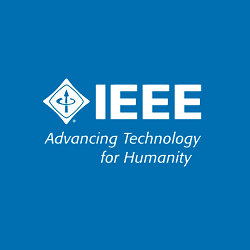دانلود ترجمه مقاله ساز و کارهای مقاومت آنتی بیوتیک در انتروکوکوس ها – نشریه NCBI
| دانلود رایگان مقاله انگلیسی + خرید ترجمه فارسی
|
|
| عنوان فارسی مقاله: |
مکانیسم های مقاومت آنتی بیوتیک در انتروکوکوس ها |
| عنوان انگلیسی مقاله: |
Mechanisms of antibiotic resistance in enterococci |
|
|
| مشخصات مقاله انگلیسی (PDF) | |
| سال انتشار مقاله | ۲۰۱۴ |
| تعداد صفحات مقاله انگلیسی | ۲۹ صفحه با فرمت pdf |
| رشته های مرتبط با این مقاله | زیست شناسی و پزشکی |
| گرایش های مرتبط با این مقاله | میکروبیولوژی، علوم سلولی ومولکولی، ژنتیک، بهداشت حرفه ای، انگل شناسی پزشکی، ایمنی شناسی پزشکی (ایمونولوژی) و باکتری شناسی پزشکی |
| مجله مربوطه | Expert Review of Anti-infective Therapy |
| دانشگاه تهیه کننده | گروه بیماریهای داخلی، بخش بیماری های عفونی، دانشگاه پزشکی تگزاس، آمریکا |
| کلمات کلیدی این مقاله | مقاومت آنتی میکروبی، انتروکوکوس، مکانیسم های مقاومت، انترکوکوس مقاوم به وانکومایسین |
| لینک مقاله در سایت مرجع | لینک این مقاله در سایت NCBI |
| نشریه NCBI | NCBI |
| مشخصات و وضعیت ترجمه فارسی این مقاله (Word) | |
| تعداد صفحات ترجمه تایپ شده با فرمت ورد با قابلیت ویرایش و فونت ۱۴ B Nazanin | ۲۳ صفحه |
| ترجمه ضمیمه | ترجمه نشده است |
- فهرست مطالب:
چکیده
تکامل و تغییرات مقاومت آنتی بیوتیک در انتروکوکوس های MDR
مکانیسم های مقاومت به عوامل فعال دیواره سلول
آمپی سیلین/پنی سیلین
مقاومت سفالوسپرین
مقاومت گلیکوپپتید
مکانیسم های مقاومت DAP
آمینو گلیگوزید ها
اگزالیدون ها
استرپتو گرامینز/ماکرولیدز/لینکازمیداز
تتراسایکلین و گلیسی سایکلین
ریفامپیسین
تریمتوپریم و سولفا متاگزول
اهداف جایگزین
تفاسیر بیشتر
چشم انداز ۵ ساله
- بخشی از ترجمه:
قرن ۲۱ ظهور عصر پسا آنتی بیوتیک را به چشم خود نظاره کرد. از ان جا که درمان های قدیمی تر راه را برای دارو های جدید باز کردند، باکتری ها دارای طیف وسیعی از تاکتیک های دفاعی می باشند. ما امروزه با راهبرد های دیروز در حال جنگ می باشیم همانند یک ارتش در برابر قلعه سام و وردون در جنگ جهانی دوم. از این نبرد ها، یک سری نواوری ها نظیر تانک و هواپیما ماندند. دو دهه بعد، ایده ارتش ترکیبی منجر به تغییر میدان نبرد در قرن ۲۰ شد.
شاید ایده سلاح ترکیبی را بتوان برای متخصصان بالینی در کشمگش های دوره پسا انتی بیوتیک استفاده کرد. درمان های زاید نظیر ترکیب بتا لاکتام ها، امپی سیلین و سرفترکسون، همانند درمان های سنتی با ظهور سمیت کم و توانایی مقاومت بالا به امینو گلیکوزید ها نیز مدنظر قرار می گیرند. همان طور که در مورد مکانیسم هایی که توسط آن انتروکوکوس قادر به شکست دادن پزشکی مدرن شد، امکان توسعه راهبرد هایی است که برای تغییر بیولوژی انتروکوکوس در برابر خود وجود دارد. رابطه معکوس بین حساسیت DAP و حساسیت به بتا لاکتام، ترکیباتی از سفالسفورین و فسفومیسین و سینرژی بین DAP و ریفامپیسین، راه را برای مقاومت در برابر بالا رفتن روز افزون مقاومت هموار می کنند. مقاومت از طریق همین منطق در برابر درمان ضد ویروسی در عفونت ویروس نقض ایمنی صورت می گیرد.
- بخشی از مقاله انگلیسی:
Evolution of antibiotic resistance in MDR enterococci The advent of the antibiotic era spurred a new revolution in modern medicine. With the discovery of antimicrobial agents and the understanding of the microbiological basis of disease, infection became a treatable disease with remarkable results. However, clinicians rapidly realized that certain microorganisms appear to respond less well to specific antimicrobial agents. For example, with the introduction of penicillin, streptococcal infection was successfully treated with this agent. However, a subset of ‘streptococcal’ organisms (later known as enterococci) appeared to respond less well to penicillin due to an inherent tolerance to the killing action of these compounds [3]. It was later found that the addition of aminoglycosides (streptomycin was discovered in 1944 [4]) to penicillin produced synergistic activity improving the cure rates for enterococcal infective endocarditis from 40 to 88% [5]. This synergistic effect was seen despite the fact that enterococci are also inherently less susceptible to aminoglycosides compared to other gram-positive bacteria. Thus, the combination of a cell-wall active agent (i.e., ampicillin/penicillin) plus an aminoglycoside became the standard of care for deep-seated enterococcal infections and this combination is still used to the present day [6]. Though it was not known at that time, the seeds of the modern MDR enterococci were already being sown. Using comparative genomics, Lebreton et al. demonstrated that the modern-day MDR Enterococcus faecium belongs to a genetic clade that appears to have diverged from animal-adapted E. faecium isolates about 75 years ago, coinciding with the introduction of antibiotics in clinical practice [7]. Features of this clade (designated A1) include an increase in mobile genetic elements, alterations in metabolism and hypermutability, a skill set that provides E. faecium a malleable genome in the face of multiple selective pressures. The remarkable increase in the use of antimicrobials in clinical medicine in the latter half of the 20th century provided the selective environment for these microorganisms to evolve by recruiting a variety of antibiotic resistance determinants. Among the most distinct examples of this adaptability is the acquisition of the genes encoding vancomycin resistance. Van-comycin use was associated with the emergence and spread of methicillin-resistant Staphylococcus aureus (MRSA) in the 1960s. However, unlike MRSA, enterococci have been able to recruit and maintain a variety of gene clusters encoding the biochemical machinery for vancomycin resistance. From the first recognition Miller et al. Page 2 Expert Rev Anti Infect Ther. Author manuscript; available in PMC 2015 May 15. Author Manuscript Author Manuscript Author Manuscript Author Manuscript of vancomycin-resistant enterococci (VRE) in 1988 to late in the first decade of this century, the rates of van-comycin resistance in E. faecium in the USA have surpassed 80% [8]. Of concern, E. faecium is also increasingly identified in nosocomial infections, now occurring as frequently as isolates of Enterococcus faecalis (whose rates of vancomycin resistance are about 5%) [2]. More recently, enterococci have also served as donors of vancomycin resistance gene clusters to more pathogenic microorganisms such as MRSA, an event considered to be a serious public health threat [9,10]. Despite the availability of anti-gram-positive agents (e.g., line-zolid, quinupristin/ dalfopristin [Q/D], daptomycin [DAP], tige-cycline), enterococci have rapidly adapted and emergence of resistance to all these newer agents have been well documented. This phenomenon makes the treatment of MDR enterococcal infections a daunting clinical challenge. Thus, in the following sections, we will review the molecular mechanisms of antibiotic resistance in enterococci with the objective to place such mechanisms in context within a clinical perspective and explore innovative strategies to combat these recalcitrant microorganisms.
| دانلود رایگان مقاله انگلیسی + خرید ترجمه فارسی
|
|
| عنوان فارسی مقاله: |
مکانیسم های مقاومت آنتی بیوتیک در انتروکوکوس ها |
| عنوان انگلیسی مقاله: |
Mechanisms of antibiotic resistance in enterococci |
|
|




